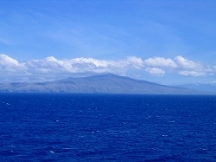Digital Collections
Celebrating the breadth and depth of Hawaiian knowledge. Amplifying Pacific voices of resiliency and hope. Recording the wisdom of past and present to help shape our future.
Kapono Chang
The ‘āina is no longer my flesh,
it was ripped from my body and washed out to sea.
What are left are my bones.
Fractured by un-earthly craters,
detonated by greedy foreigners,
allowed by a "Joint Resolution."
UXO’s are scattered across my chest.
The sun still rises at Haleakalā,
where my clouds once dwelled.
With rain no longer touching my skin,
I am barren and dry.
Slowly my face is being repaired,
while my mana is ready to return.
The kānaka are my friends,
the Navy my enemy,
ke Akua my creator,
nā ‘Aumakua my protectors.
All have been evacuated.
I have been damaged,
now called a hazardous site.
Where are my people?
Are they coming back?
What are left are my stars, winds, currents,
smoothing down my pōhaku.
The trees and plants are sprouting,
but my time is growing old.
I give my people life to live,
but they throw bombs on me to die.
Aloha is a gentle breeze,
creeping onto my bloody waters.
The pono was left on Maui,
while the hewa was placed on me.
My name is Kaho‘olawe,
and these are my pains.
© Kapono Chang
Kaponoikala‘i Lum Kong Makoto Chang was born and raised in Kāne‘ohe, Oahu. A high school student at Kamehameha Schools Kapālama at the time, he offered the following explanation of his work:
"My journey to Kaho‘olawe took place in the middle of my freshman year with Kumu Hans [Wilhelm] on an access with the PKO to Hakioawa. The island has changed my way of thinking and living ever since. Kaho‘olawe has taught me what it is to be a Hawaiian—more specifically a contemporary Hawaiian in this changing Western world of America. I have learned to appreciate many things in my life and to take advantage of every opportunity that is given me to excel as a Native Hawaiian."

"What are left are my stars, winds, currents, smoothing down my pōhaku. The trees and plants are sprouting, but my time is growing old."